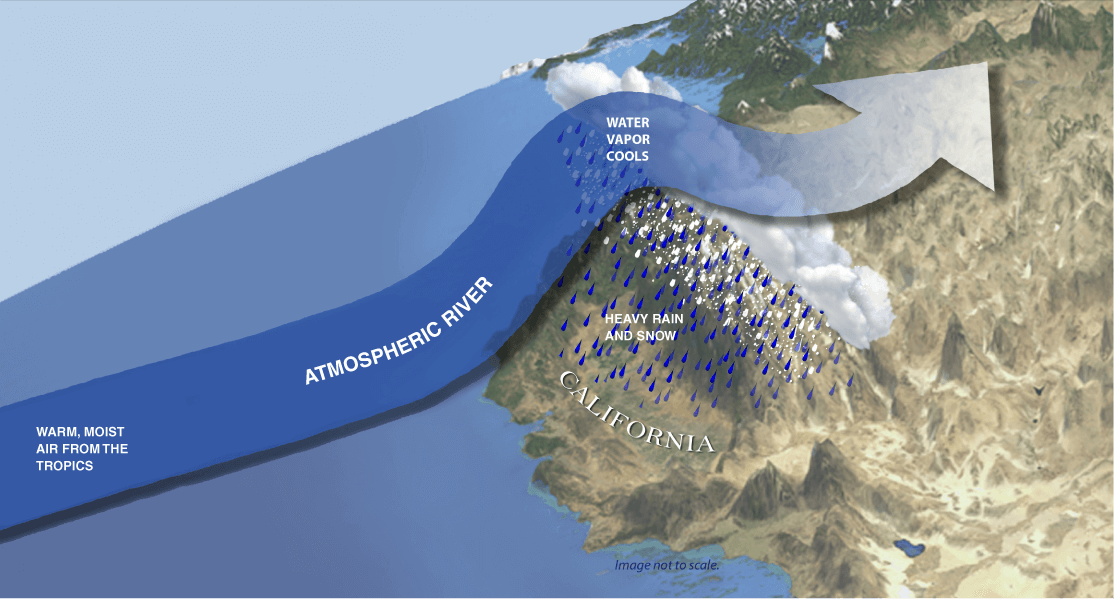What is an Atmospheric River?
An atmospheric river is a narrow and elongated region in the atmosphere that carries a substantial amount of water vapour outside the tropics. Researchers first coined the term ‘atmospheric river’ in the 1990s. It is also known as a tropical plume, tropical connection, moisture plume, water vapour surge, and cloud band.
Why in News?
Atmospheric rivers can be thousands of kilometres long and transport water vapour equivalent to the average flow of water at the mouth of the Mississippi River. The Pineapple Express is an example. It carries moisture from the Pacific region to USA and Canada. California is currently bracing for the arrival of atmospheric rivers, which are expected to bring heavy rain, flooding, and heavy snowfall.
How do scientists identify atmospheric rivers?
Scientists look for corridors that are 2,000 km long. Corridors mean the atmosphere in this region is almost uniform in terms of colour, temperature, moisture content, and other aspects. The ocean wind speeds right below the atmospheric rivers are different. So are the sea ice cover and precipitation intensity.
What are the impacts of Climate change on Atmospheric rivers?
The capacity of the atmosphere to hold more and more moisture is increasing. This is because of the increasing global temperature. As temperature increases, the air can hold more water. So the atmospheric rivers are becoming more intense (or violent). They are growing longer and wider.
Why are atmospheric rivers a problem?
During dry conditions, the atmospheric rivers quench the wildfire and save forests. But during winters and rainy seasons, they add to the rainfall causing floods and landslides. More than 40 atmospheric rivers have hit the Pacific coast. They did not cause many losses so far. But! In recent times, the atmospheric rivers hitting the Australian coasts have been causing severe damage.
NOTE: Atmospheric rivers do not occur in the tropics. They occur beyond the tropics.
Month: Current Affairs - March, 2023
Category: Science & Technology Current Affairs


